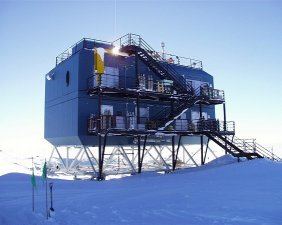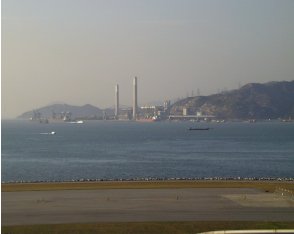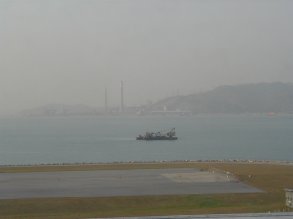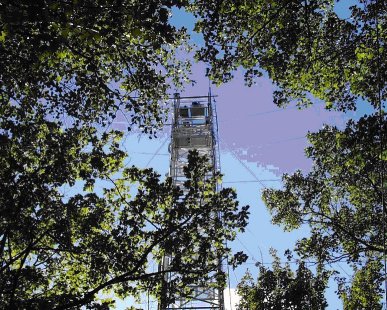SAFS
Scanning Actinic Flux Spectroradiometer
The SAFS instrument determined wavelength-dependent downwelling actinic fluxes for calculation of photolysis frequencies of photochemically-important compounds. The nitric oxide instrument was used to determine ambient nitric oxide concentrations and nitric oxide concentrations in the snowpack firn air. The data has been submitted to the data archive, and data analysis and manuscript preparation are in progress. This activity was a collaboration with the ISCAT Science team which included: Douglas Davis and Glen Huey (Georgia Institute of Technology), Alan Bandy (Drexel University), Richard Arimoto (University of New Mexico) and Peter McMurray (University of Minnesota).

Figure 1: The ISCAT research facility at the South Pole. The SAFS instrument was mounted on the roof of the building.
Four new SAFS instruments were deployed for two months on the NASA DC-8 and P3-B research aircraft to determine in situ wavelength-dependent total actinic fluxes for calculation of photolysis frequencies in the Asian outflow region around Hong Kong and Japan. The instruments were reduced in size and weight from previous deployments and incorporated improved temperature control and data acquisition hardware and software. When the instruments returned from the field, final calibrations and stability testing were performed in the ARIM laboratory calibration and Marshall Field site facilities. Currently, final values are being calculated and will be submitted to the GTE data archive with data analysis and manuscript preparation to follow.


Figure 2: View from the Hong Kong Airport across the harbor to a power plant on a clear (left) and on a polluted (right) day.
A SAFS instrument was deployed for 5 weeks to the 30 meter tower at the University of Michigan Biological Station in Pellston, Michigan to determine downwelling wavelength-dependent actinic flux for calculation of photolysis frequencies. The data has been processed and is currently being finalized for submission to the PROPHET archive. This activity was a collaboration with the PROPHET Science team and included the following university partners: Mary Anne Carroll (University of Michigan), Paul Shepson (Purdue University), Steven Bertman (University of Western Michigan), and Huey (Georgia Institute of Technology).

Figure 4: PROPHET tower at the University of Michigan Biological Station.